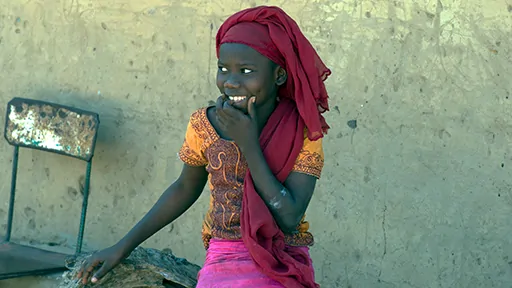Opinion Editorial Archive December, 2018: Indigenous Girl of the Year

At this time in the annual calendar various titles of the form "... of the Year" are decided and awarded. Few such titles are specific to or even acknowledge indigenous people. Among the exceptions are (Canadian) Indigenous Music Album of the Year and (Australian) National Indigenous Legal Professional of the Year and National Indigenous Student of the Year.
I believe there should be a similar title acknowledging the most marginalized group in the world — indigenous female children. So, this month I am inaugurating the annual "Indigenous Girl of the Year" title. It will be awarded each December to an indigenous girl that I photographed during the year.
A month from now we will begin the International Year of Indigenous Languages, aimed in part at preserving threatened languages. This girl's language, Mandinka, is already spoken by millions of people today. So, it may not feature in next year's events. Nor may this Mandinka girl herself, but she is my "Indigenous Girl of the Year" recipient. Why? Because she captured my attention more than any of the other indigenous girls I photographed in 2018.
We live during a time when indigenous peoples' rights are beginning to be represented in international law and global consciousness: their land rights, their human rights and the exposure by some journalists of indigenous affairs in general. But we also live during a time when their rights are being eroded more than ever before and with more impunity than ever before.
We also live during a time when, for the most part, indigenous adults are playing an increasingly smaller role as defenders of their rights, their heritage and their culture. This leaves a vacuum that, in countless examples, is being filled by the younger generation.
As I spent time in her remote village in The Gambia, West Africa, many of her peers sought me out to have their photo taken. She did not. I don't know why. She didn't appear to have pressing matters to attend to. In fact, she observed her peers from a distance as they spoke to me waiting their turn to be photographed. (English is widely spoken in The Gambia.) I didn't speak to her, but from her mannerisms she struck me as exceptional and in advance of her years — which I guessed to be around 12 or 13.
She may well be the kind of indigenous girl who is now rising to the challenge of bettering the lives of their people. If so, she has a lot of work ahead of her. In the areas where her people live there is much to combat: HIV/AIDS, poverty, discrimination, lack of social and economic opportunity, access to clean water, access to education, human trafficking — the list is almost endless. But I know from first-hand experience that, given the opportunity, girls like her are up to the challenge.
Learn more about the Mandinka people.
If you enjoyed reading this month's opinion editorial, please consider supporting independent, advertising-free journalism by buying us a coffee to help us cover the cost of hosting our web site. Please click on the link or scan the QR code. Thanks!

